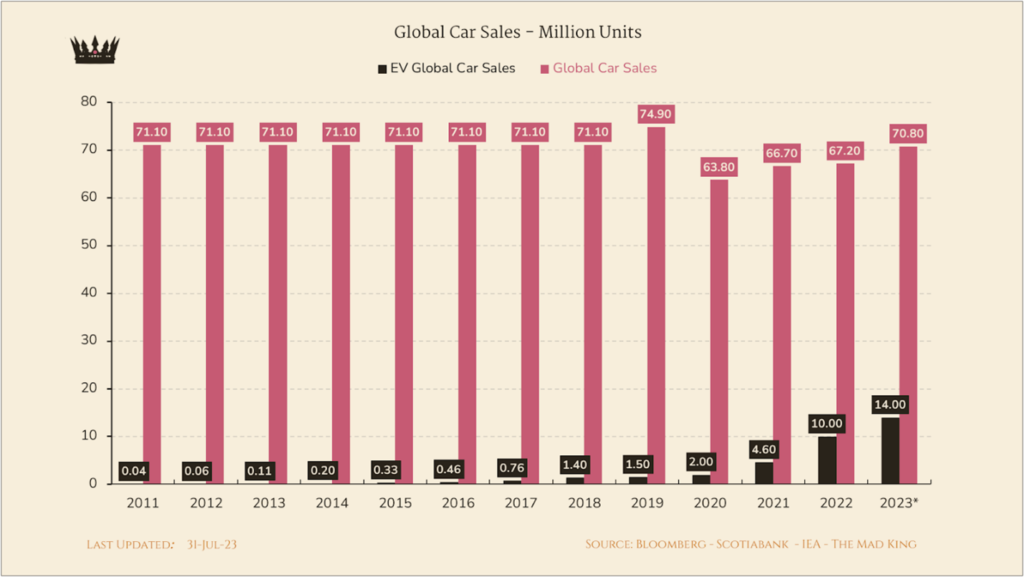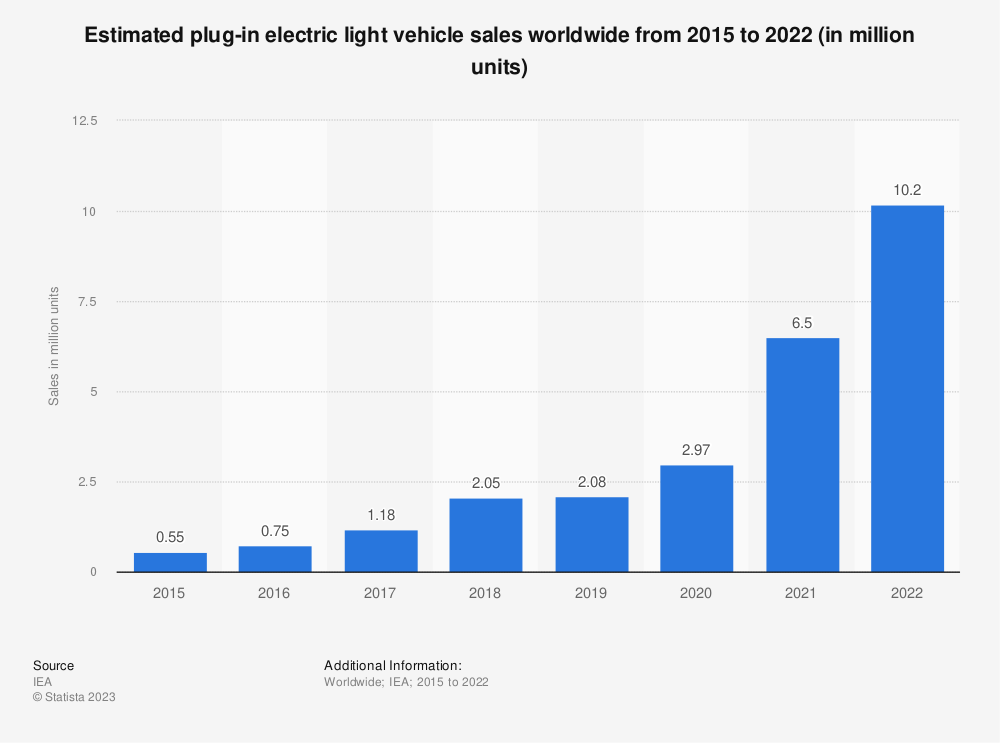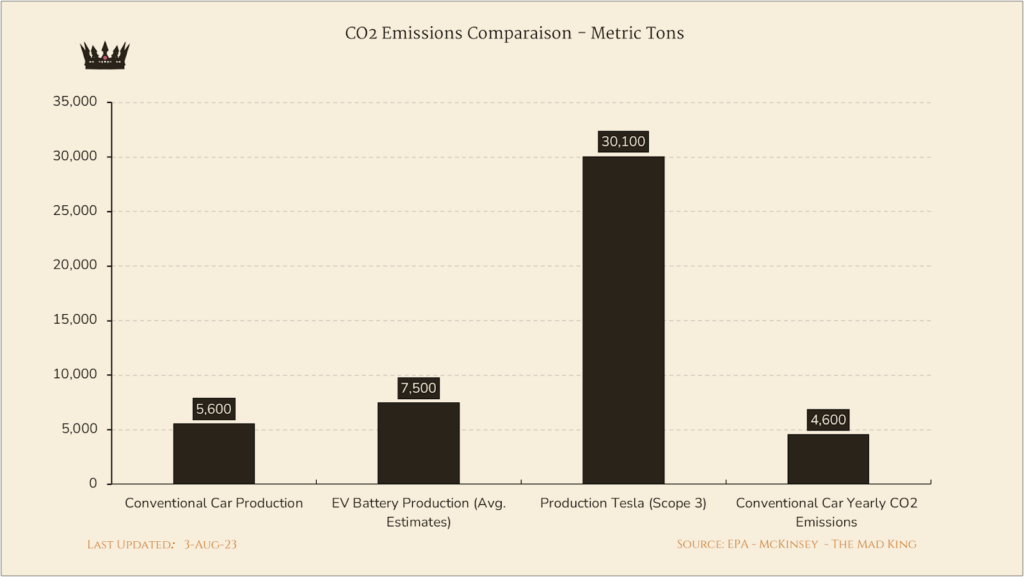

If all electricity production is accomplished with zero CO2 emissions, a significant next step is, presumably, transitioning to electric vehicles. It is a huge theme and one that gains strength with every EV seen on the roads. It is worth thinking about how big an impact this could have.
The following chart sets the parameters:

Transportation, aviation, and shipping together contribute less than 20% of global CO2 emissions.
EVs currently represent 1.6% of total vehicles in use globally.


Estimated worldwide motor vehicle production increased from 8 million in 2000 to 85 million in 2022

Electric vehicle sales represented approximately 12% of that total in 2022.

Assuming no growth in overall vehicle sales, sales of EVs would need to grow approximately 24% per year to take over sales of internal combustion engine (ICE) vehicles in ten years.
Although growth rates in the production of EVs have been impressive in recent years, the challenges (and consequences if achieved) of the required growth rate are considerable.
The production of batteries for EVs is an energy-demanding process involving the extraction and processing of minerals such as lithium, cobalt, and nickel. These processes at present rely on fossil fuels and thus generate CO2.
In addition, there are end-of-life and recycling challenges with the batteries produced.
While EVs have a genuinely positive impact on reducing CO2 over their lifetime, the short-term impact may, absent a significant shift to increased use of renewable energy sources in the production of EVs, be to increase CO2 emissions. The following chart, built using estimates from McKinsey, suggests that the production of an EV battery generates around 100 kg of CO2 equivalent per kWh.

An average EV employs a 75kWh battery, so producing a single battery would emit 7500 kg of CO2 versus 5600 kg for manufacturing a normal ICE.

Based on recent reports by Tesla, the second leading EV producer globally, the level of Scope 3 emissions, which includes all indirect emissions in their full supply chain, including those associated with third-party providers, is much higher than previously estimated.
This revelation highlights that a Tesla vehicle only reaches the point of carbon neutrality, where it offsets the CO2 emissions it caused during production after nearly seven years of operation. This means that Teslas produced this year will be carbon neutral in 2030!
This time frame assumes there are no significant mechanical issues and the battery does not need to be replaced during this period, both of which could extend the breakeven point.
Extrapolating this data to the broader electric vehicle industry, if all EV manufacturers have a carbon footprint on par with Tesla’s, it’s evident that our current efforts to reduce carbon emissions in transportation by producing EVs are front-loaded with CO2 emissions.
In essence, we’re momentarily ramping up our CO2 emissions, assuming that these electric vehicles’ future deployment will lead to a cumulative decrease in emissions over time. This is happening concurrently as we continue to churn out most conventional vehicles.
Therefore, the immediate challenge is clear. We are effectively accumulating additional CO2 emissions in our atmosphere now in anticipation of future benefits.
The overall effectiveness of this strategy, particularly in the context of urgent climate action, is a question that needs to be closely examined.
Moreover, we must consider that hybrid vehicles still contribute to CO2 emissions but have a relatively constrained range. Although they’re classified and marketed as “green vehicles,” this characterization holds true primarily in a statistical context, not necessarily in practical terms.

EVs, while they have an important role to play in CO2 emissions reduction, are not a complete answer and contain some of their own challenges.
Part 3 will wrap up with a consideration of some emerging market trends – China and India primarily – and finally consider the right context for evaluating the future of renewable energy.